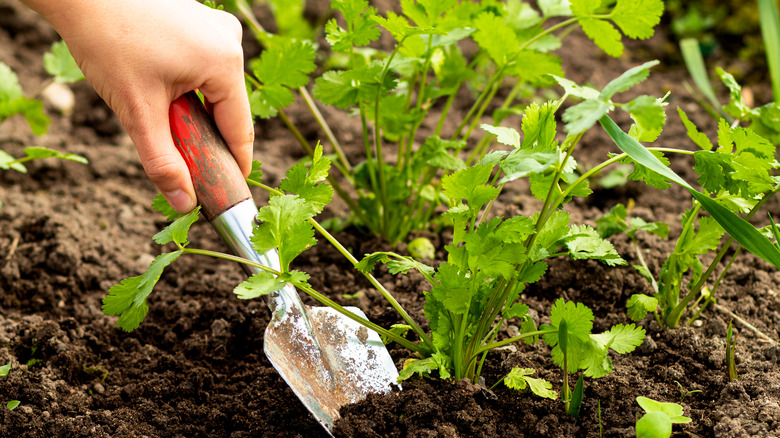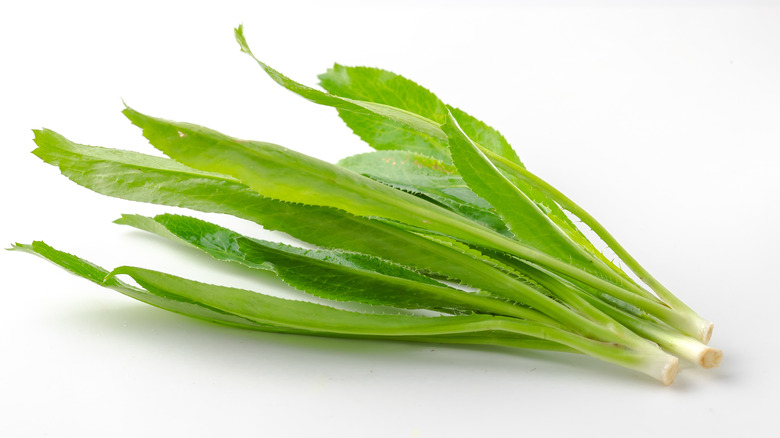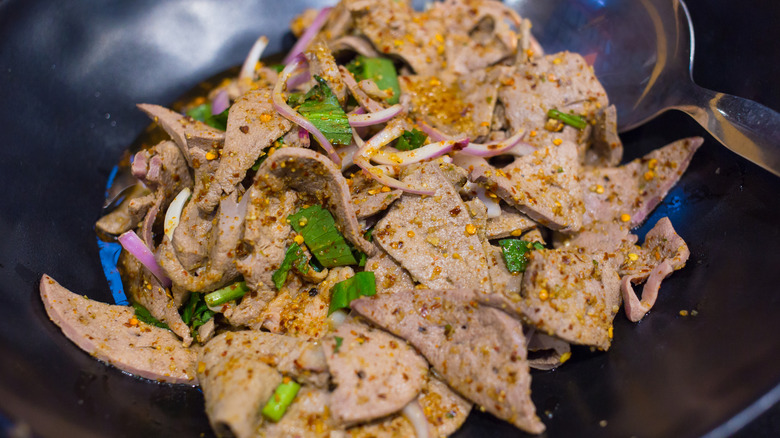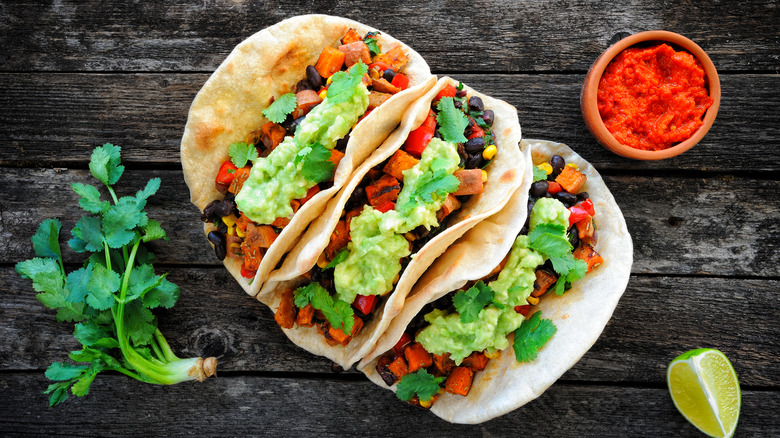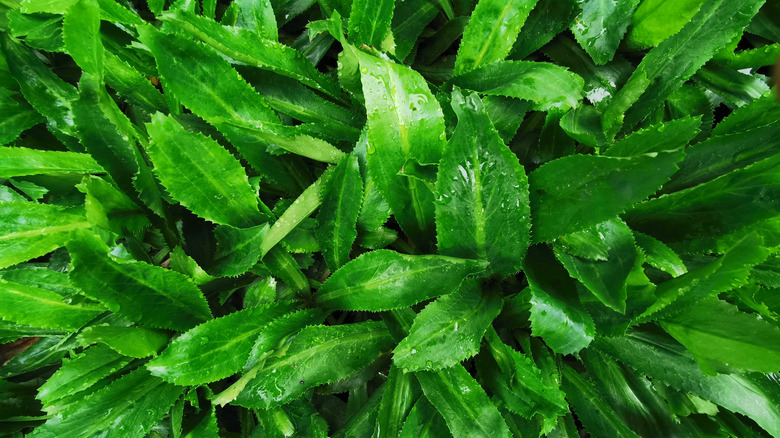Culantro Vs. Cilantro: How Are They Different?
Cilantro and culantro are both green herbs used for culinary and medicinal purposes. Cilantro is more common, as it is put into dishes for additional flavor after they are complete. Culantro is a seasoning with much more of a kick than cilantro and carries a totally different look.
The similar features of culantro and cilantro make it easy to confuse the two. According to The Spruce Eats, culantro grows like lettuce with long jagged leaves that can be as tall as 1 foot at the peak of growth. Cilantro is thinner, with small leaves at the tips of long stems. Although the scent and flavor of culantro is similar to cilantro, culantro is more potent. Therefore, it is used in less quantity than cilantro.
Scientifically known as Eryngium foetidum, culantro is not seen as much in the United States. Found in moist areas, the plant can be harvested about 10 weeks after being planted (via GardeningKnowHow). It normally grows best in the spring time, but can thrive in the summer season!
What is culantro?
Culantro originates from areas in Latin America and the West Indies. World Crops claims that unlike culantro, cilantro came from the Mediterranean after being introduced to America by European colonists. Due to the fact that culantro is similar in taste to cilantro and greatly favored in Latin dishes, cilantro became the popular favorite at that time.
As a member of the Apiaceae family (this includes celery, parsley, carrots, and parsnip), culantro can be utilized for meals or medicinal purposes. Some Latin American countries switch the names for each herb in sofrito, a staple cooking mix, because they are both customary ingredients.
What do each taste like?
Now onto the best part, how does culantro taste? The herb is said to be 10 times stronger than cilantro, causing a much more pungent smell. It is known for a bitter and citrusy flavor that is great for long cooking recipes. It has been compared to the scent of a skunk (yum?), therefore it may not be favored for that reason.
Cilantro is similar to this flavor, just nowhere near as powerful when it comes to aroma and taste. You can describe it as a warm, spicy, and nutty taste that can be compared to parsley and citrus. It is also popular to compare the plant to the flavor of soap.
How do you cook with each?
Culantro is a great heat-tolerant substitute for cilantro, as it has the capability to maintain flavor and fragrance incredibly well while drying out, unlike cilantro. Cilantro is normally used after a dish is complete due to its more subtle flavor. For example, salads, tacos, and salsas all contain this herb.
Cilantro can be used to substitute culantro, however, much more of it is needed. If you would like to get the same flavor in your dish, it is recommended that you use 10 times whatever amount of culantro the recipe calls for (via The Spruce Eats). The most common dishes that contain culantro are Caribbean sofrito, Cuban braised chicken stew, and Vietnamese pho bo beef noodle soup. It can be found in mainly international markets, as the seasoning is not as widely available as cilantro is.
What are the nutritional differences of culantro and cilantro?
Culantro is extremely rich in calcium, iron, carotene, and riboflavin. Due to this, the plant is used for medicines that help with the flu, diabetes, constipation, and fevers. It normally is put into tea for the analgesic and anti-inflammatory properties.
On the other hand, Aspen Integrative Medicine says that cilantro provides vitamins A, C, E, K, calcium, potassium, magnesium, and iron. The herb is also low in saturated fat and cholesterol, making its caloric value virtually nothing. The spice is great for building strong bones, teeth, and hair, along with lowering blood pressure and reinforcing healthy cardiovascular function.
We are totally intrigued by culantro and cilantro, and hopefully you are, too. Is anyone else craving tacos?
